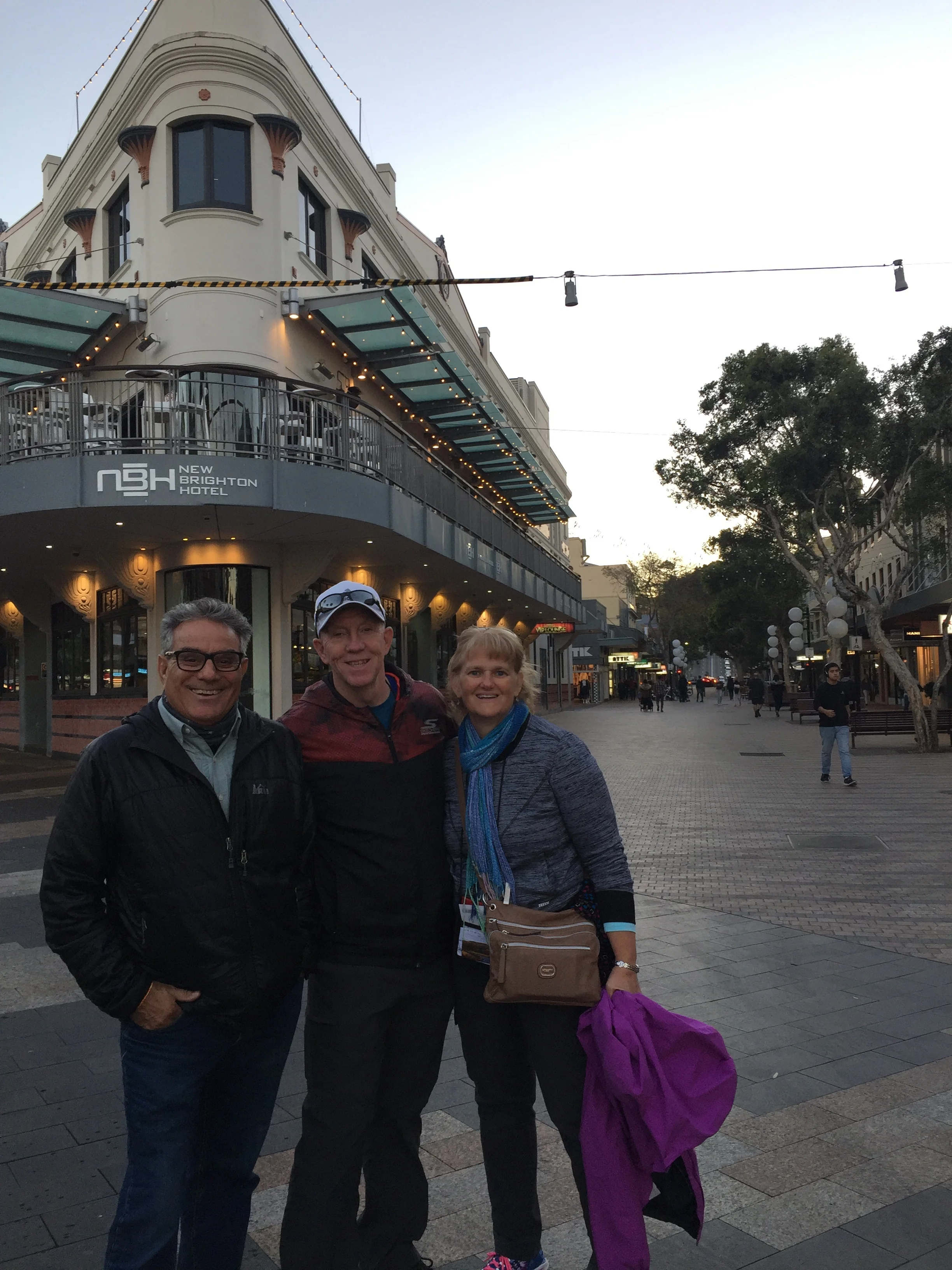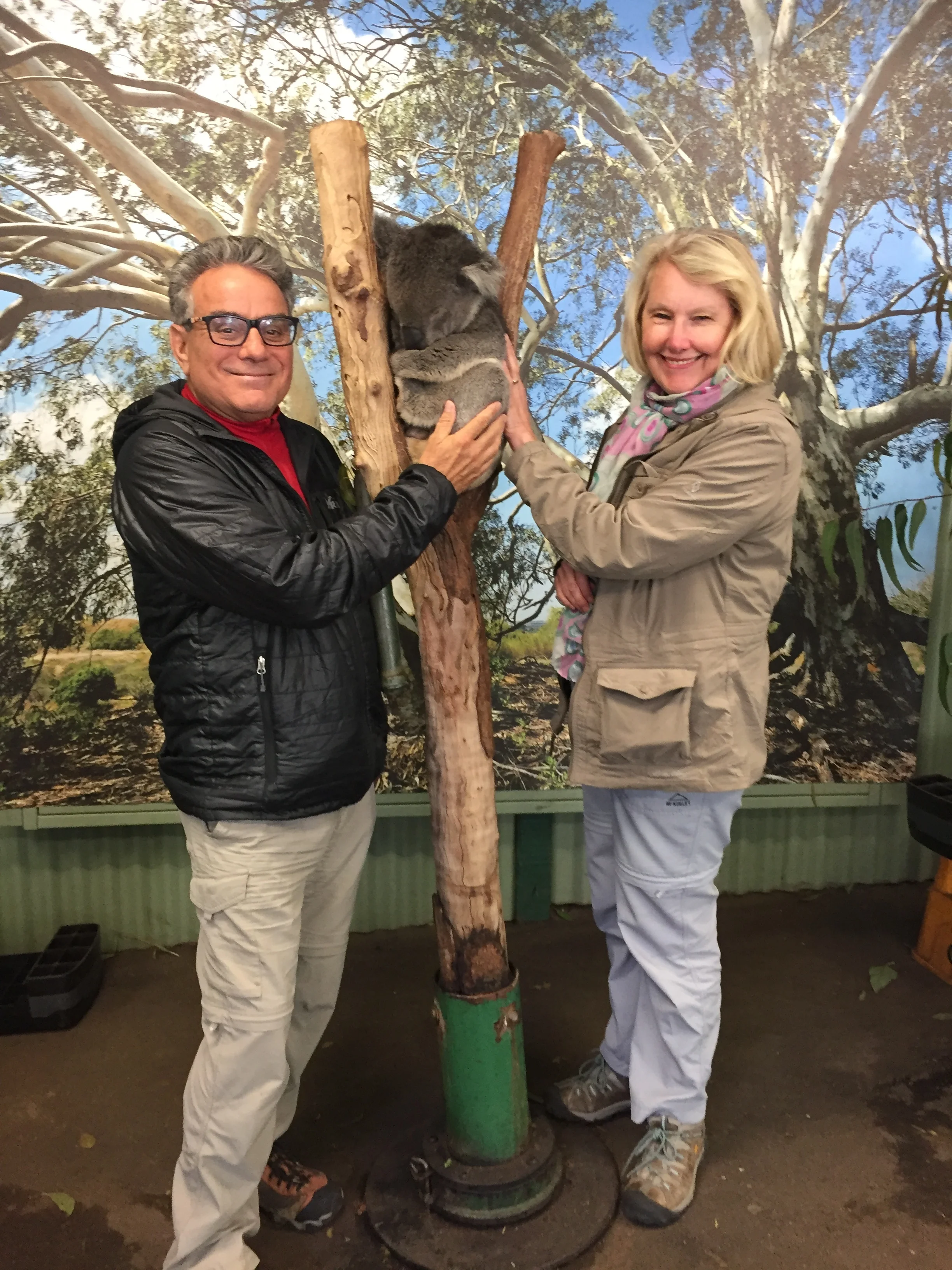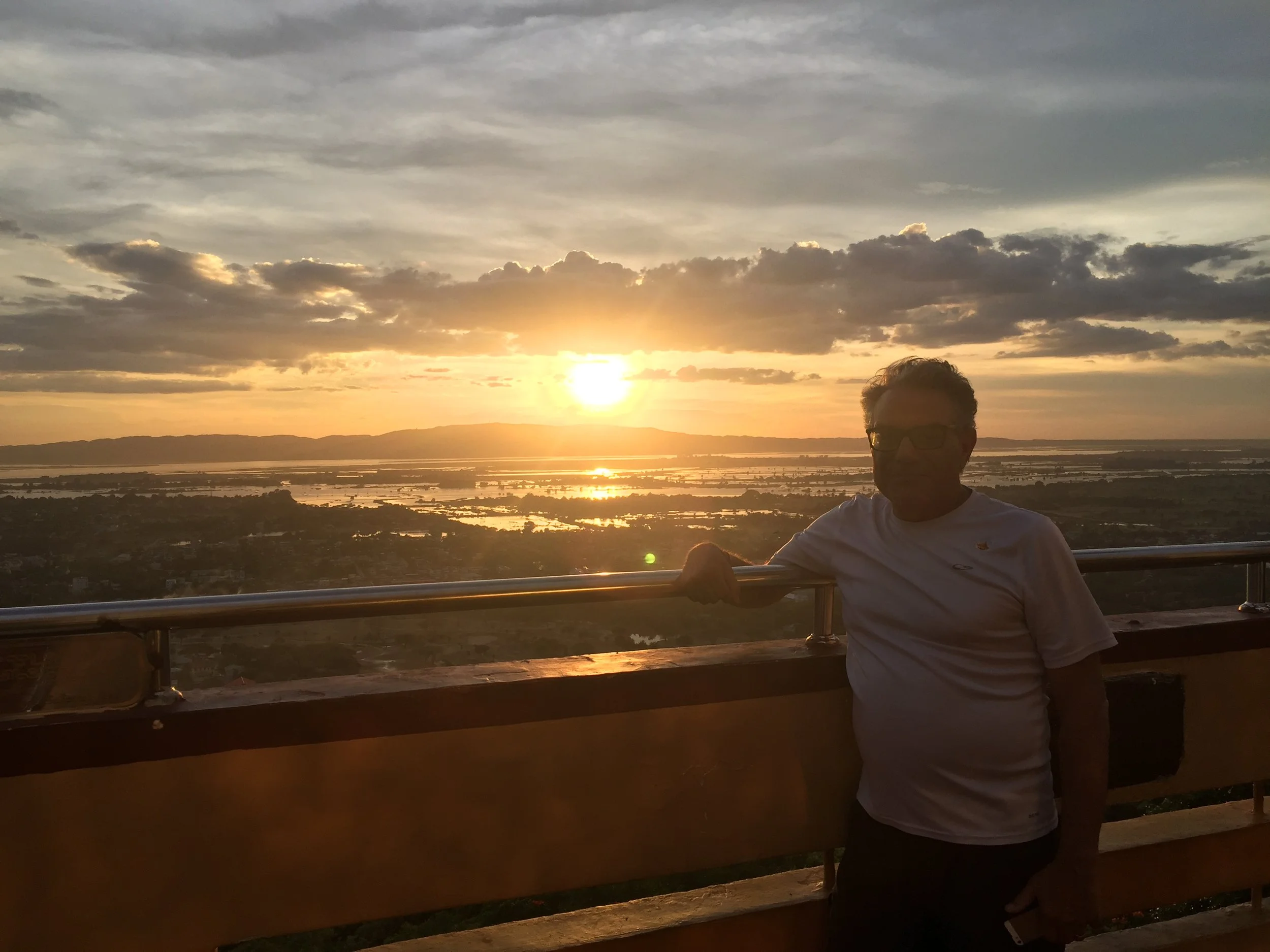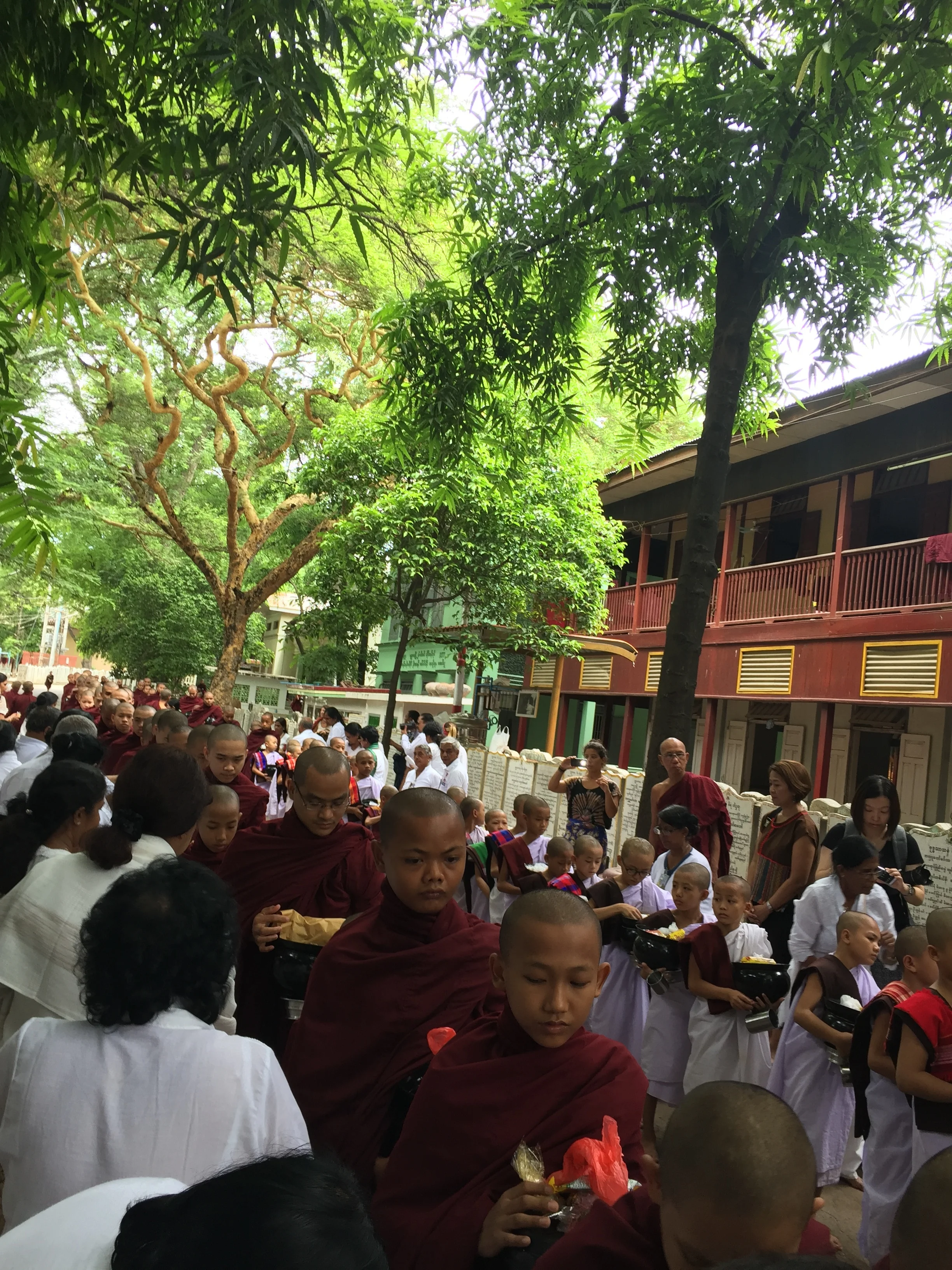Cairns and Port Douglas are resort towns in the Queensland state of Australia and common launch points to see the Great Barrier Reef. The entire “GBR” is actually as long as California and has 2700 reefs in the chain. Our flight was 2.5 hours from Sydney and we had a nice Airbnb just outside of the Cairns downtown and shoreline. Cairns reminds us of Florida, but 20 or so years ago. There are modern developments, but the roads and most buildings do indeed remind us of Florida past, except Cairns has a long waterfront with large marinas, but is rocky without beaches. The beaches are farther up the northern coast. Each day thousands of vacationers motor boat to the reefs for snorkeling and diving. We chose a double deck Catamaran motor sailer with the “Passion of Paradise” group. This was a first class outfit.
To get around we rented a car, just for the third time on the trip and our friend Chip was the designated driver. Australia drives on the left and the city has an abundance of roundabout. We had a good time zipping through the city and country side with the help of google map and Chip’s good nature and patience with three backseat drivers.
Chip at the wheel on the right side
Our boat for the day
We reserved our day trip to the reef prior to our arrival and on our first day we were up early and at the boat dock by 7:30 am. We selected a company that has catamaran sailing boats that carry up to 100 passengers. The day is warm and sunny and the ride out is smooth with breathtaking views. After some instructions on how to snorkel in open water, and a quick stop to see a few Humpback Whales jumping for us, we reach the reef by 10:00 am. We have all snorkeled in the Caribbean, Gulf of Mexico, Costa Rica and most recently in Phuket, but this open water is a totally different experience.
The humpback whale
The waves are high, not quite white water but moving fast. We have good gear including fins and after going into the water you must swim hard not to get pushed back into or under the boat. You can see where the reefs are by the dark areas of water, the aqua blue water is clear to a sand bottom.
Our first challenge was Frank’s asthma. Up to this point in the journey his breathing has been good with little or no issues. As soon as we landing in Cairns he starting having problems and by the time he hit the water he was wheezing hard and could not get a deep breath. So on dive one he quickly got out of the active water waves. He did paddle around the aft ladders trying to catch his breath, but mostly watched from the boat. This initial setback was disappointing as we had snorkeled in Thailand about 3 weeks ago.
For Jean, Chip and I the challenge of swimming and the waves were rewarded by the best reefs and coral we have ever seen. The fish were bright colors, the coral was alive and moving. We spent time watching huge conch shells “breathing” in and out and watched large and small fish feeding on the coral. When the whistle blew, it was back on the boat for a nice lunch and we moved to a second location. On the second dive, this time Frank went out with me and a life ring, we took it slow and he was able to stay out to see all the great sights at this UNESCO site. What a great trip.
Beer on the boat after both dives
The next day we take a road trip 90km passed Port Douglas and to the Dainetree National Rainforest. The drive is longer than expected but beautiful views of the shoreline. You enter the park with a small ferry that runs on a cable across a small river. Very inefficient to us but the park lists this as an attraction. We visit a beautiful secluded beach, walk trails in the rainforest and have a nice picnic lunch. We also walked the rocky shoreline.At no time beforehand did we see or read the "Crocodile Warning Sign". On the way home, we stop in the town of Port Douglas for a great sunset dinner at the marina, watching boats at dusk arriving from the GBR.
Dinner in Port Douglas with the sunset
Our plan for our third day in Cairns was a cable car trip to a second rainforest, but Frank had his worst night yet so Frank and I went to the local hospital for a breathing treatment. The hospital was great, quick and friendly. It is sugar cane cutting season and the Doctors inform us that this area in Cairns has the highest pollen in Australia. But thanks to their excellent care, Frank is on the mend and ready to go. Chip and Jean did make the outing and their guest blog is below.
Wednesday, we (Chip and Jean) were on our own, navigating all the roadway roundabouts without Janet’s dependable Google Maps directions. They sure love their roundabouts in Cairns! Our destination …. the scenic Skyrail to Kuranda, a 5 mile gondola ride up to a small tourist village at the top of a mountain. (Being from Colorado, we find it difficult to call these mountains. They are much more like the foothills of the Rocky Mountain Front Range, but much more lush.) This adventure was definitely more about the journey than the destination. The first stop was Red Peak station were the Ranger, Cameron, gave a great presentation of the symbiotic nature of life under the rainforest canopy. The second stop was Barron Falls, which was just a trickle of its usual mighty surge. Because winter in OZ is the dry season, not much was flowing. But it was a comfortable 70°, so we weren’t complaining.
The trains of cut sugar cane line the roads
Like departing a cruise ship at a port of call, the street that meets the Skyrail station is full of candy shops and souvenir shops. Get past all that and there is a lovely hiking trail that goes anywhere from 1.2K to 4.8K through the rainforest. We opted for the shorter hike “return trip” (as they say for there and back) and a quick lunch on the veranda of one of the many eateries. Again, more about the experience than the food. We were excited to once again float over the rainforest canopy on our way back down. And, we were anxious to hear how Frank and Janet‘s day had gone.
While Cairns, and all it has to offer, was a fantastic experience, the sugar cane harvest played havoc on both Jean and Frank. The sugar cane pollen count is at its highest levels right now, causing respiratory distress for anyone with asthma or pollen allergies. Hoping for clearer a air in Brisbane.













































































































































